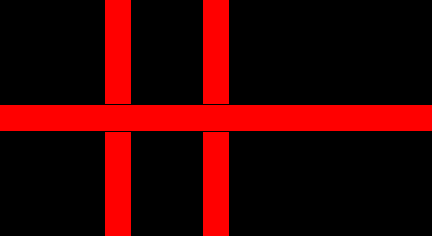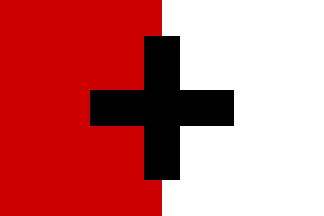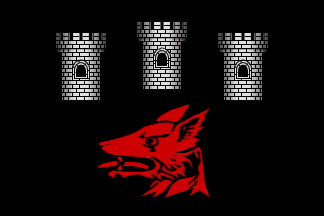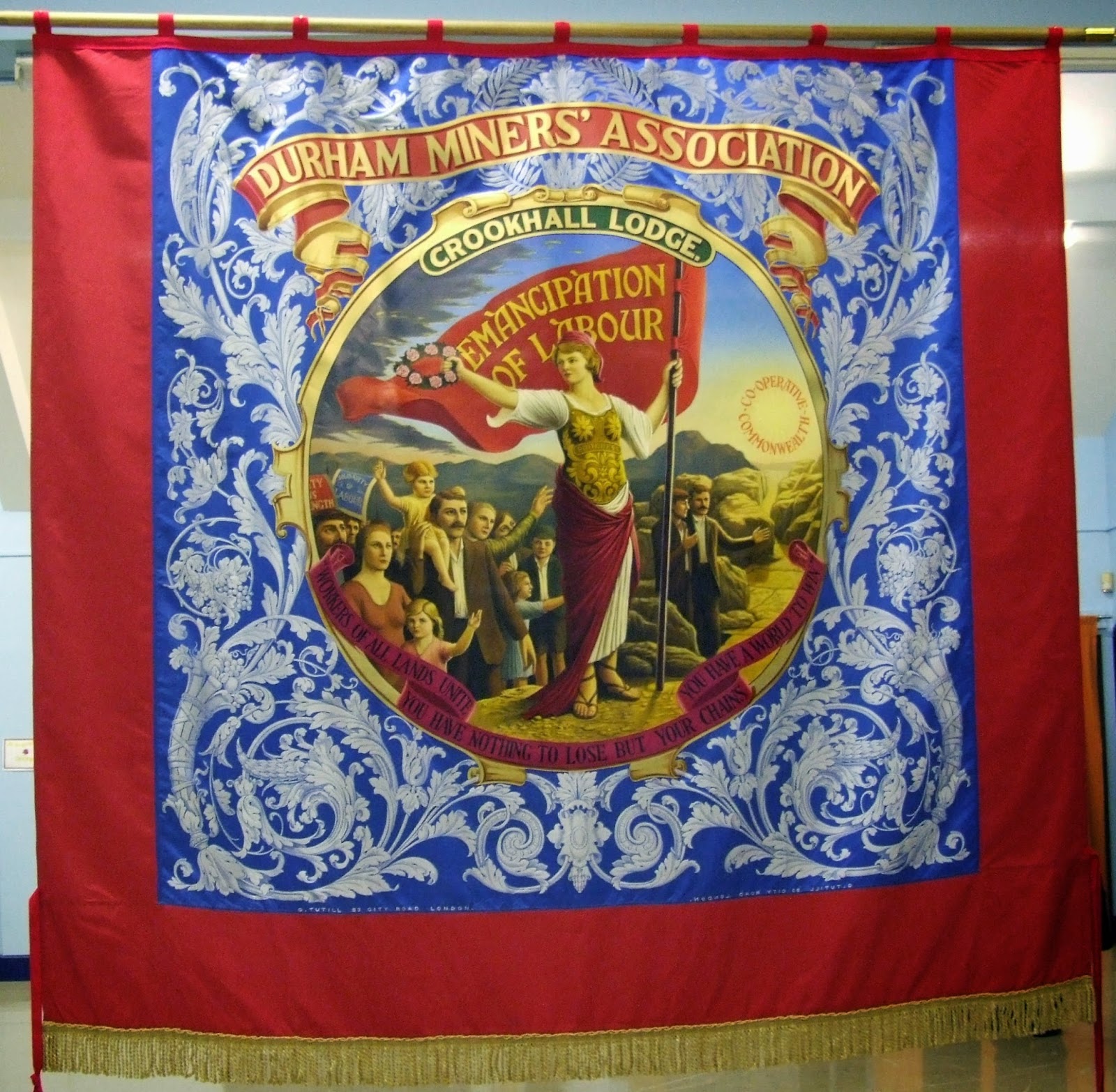Before anything else, I have to acknowledge a debt of gratitude to the
Morse, Lewis and Endeavour blog and particularly the information pertaining to Season 5, Episode 4,
here, without which I wouldn't have been able to spot the reference to '
Hi-De-Hi', or identify the painting.
So, watching
Endeavour again... the episode (called 'Colours') where Morse has to solve a murder on an army base - the Cowley Barracks of the South Oxfordshire Regiment, where Sam Thursday, son of Morse's superior DI Fred Thursday, is a soldier. The background is that the regiment is being both amalgamated and transferred from Oxford to Germany; one of the motifs of the episode is of loss, symbolised here by the literal end of an era.
It's a very densely-textured episode, featuring as it does references to Roderick Spode and Everard Webley (their potential connections to the Very British Civil War are outlined
here), along with vaguer allusions to Lady Penelope from
Thunderbirds, as well as references to
It Ain't Half Hot, Mum,
The Likely Lads, and
Hi-De-Hi. There are also thinly-disguised versions of Unity Mitford (AKA Charity Mudford) and Malcolm X (AKA Marcus X).
But it's the South Oxfordshires that I'm interested in at the moment. There are... problems... with the military history as presented in the show. What we know is that the regiment has a long history. The episode is called 'Colours' and though there are at least two potential strands or themes of the narrative that are being referred to in the title, the most obvious is a reference to the Regimental Colours. There is an early shot of Colonel MacDuff (known as 'Mac'), one of the officers, looking at the Regimental Colours. The shot shows battle honours including Waterloo, Kabul, Mons, Somme, Djebel Djaffa Pass, Medjez Plain, Longstop Hill. We can't see all of the flag and at no point do we see other honours, though generally we'd expect a similarly-sized list (six-eight items, with perhaps more elsewhere) in the corresponding portion of the the flag that we don't see.
These honours and the years in which the battles were fought can be determined as follows (I'm assuming that the named battles are all the 'known' battles of that name, and there isn't an unknown Battle of Waterloo in WWI, a Battle of Mons in the Napoleonic Wars or anything like):
Waterloo – June 1815
Kabul - (could be any of several battles)
Mons – August 1914
Somme – July-November 1916
Djebel Djaffa Pass, Medjez Plain, Longstop Hill – April-May 1943
The illustration below is actually from from the 24th Foot (2nd Warwickshire) Regiment, and shows in general terms what might be expected on a Regimental Colour flag of an Infantry Regiment in the British Army. Here, the battle-honours are paired across the halves of the flag with a device in the middle and we can therefore assume on the South Oxfordshires' Regimental Colours, some similar layout is in place. The flag of the South Oxfordshires seems to me to be dark blue rather than green (though it is not entirely clear). Different regiments had different traditional coloured flags and this is normal variation one might expect to find, though in general, only regiments with 'Royal' in the title were supposed to use blue.
Other statements in the episode show that the South Oxfordshire Regiment also fought in the Korean War, 1950-53.
On climbing a grand staircase in the main building, Morse is involved in a conversation with a historian, Dr Laidlaw, who is researching the history of the regiment. Morse passes a painting on the stairs. Dr Laidlaw says it shows "Drummer Hawkins, the boy who saved the Colours at Mboto Gorge". The painting itself was created for the show by excerpting a piece of a painting of the
Battle of Isandlwana (sometimes the name is spelled Isandhlwana), fought in South Africa in 1879.
This painting, and Dr Laidlaw's explanation of it, unfortunately create more problems than they answer.
Let's start, as many things do, with the Battle of Mboto Gorge.
This is a battle first mentioned in
Blackadder Goes Forth. In it, Edmund, then with the 19/45th East African Rifles, saves the life of Douglas Haig, later commander of the British Expeditionary Force in the First World War.
This imposes a certain structure on when the Battle of Mboto Gorge can have been fought. According to the scripts, Blackadder and Haig haven't seen each other since (in Blackadder's words): "'92, sir. Mboto Gorge". Captain Darling asks if the Mboto Gorge was "...when we massacred the peace-loving pygmies of Upper Volta and stole all their fruit?" (the original has the typo 'pigmies' here). Blackadder's reply is "No - totally different Mboto Gorge" but his (and General Haig's) later references to pygmies and fruit salad demonstrate that this is just defection on Blackadder's part; it is the same Mboto Gorge. This accords relatively well with what we see of Blackadder, and his other statements that he spent his early career fighting "colonial wars", and "Fifteen years of military experience perfecting the art of ordering a pink gin and saying 'do you do it doggy doggy?' in Swaheli...". So, the likelihood is Blackadder spent a lot of time in Africa. He served, apparently, with the 19/45th East African Rifles. Due to frequent references to Sudan, we can also speculate that Blackadder was there, during or after the Mahdist War there (a sprawling series of conflicts lasting from 1881-99). We know (from real history) that Haig also served in Sudan, and (because he says so) Melchett was also there.
According to the Blackadder Wiki, this Edmund was born in 1871, and joined the army in 1886, and the Battle of Mboto Gorge took place in 1890 (
link), though why they have information that contradicts the scripts is unclear - I'm following the scripts on this one, as the primary source (even if the narrators are somewhat unreliable). But I would think the general lines are pretty well established. Blackadder should be born around 1871 (probably not more than a couple of years either way) because in 1917 he shouldn't be more than 50 and preferably somewhat less. However, he must have been a soldier by 1892, by his own admission, and must (independently) have had a career of around 15 years prior to 1914. So, perhaps, his career should be reconstructed as something like 1892-1907, in Upper Volta, Sudan, and British East Africa, followed perhaps by retirement from the army and being called up again in 1914.
All well and good. General Haig's real career doesn't include being in Africa in 1892. He joined the army in 1885, and was posted to India the following year with the 7th (Queen's Own) Hussars. He did not return from India until November 1892, and then came back to England. But he was at least in the army at the right time.
But here's the rub of it all. The painting, purportedly of a battle fought in 1892, shows British soldiers in red coats. There is a young drummer who 'saves the Colours'. None of this can really stand, for various reasons.
The biggest problem is that in 1892 (or even 1890, if the Blackadder Wiki is to be believed), British soldiers didn't wear read coats on campaign. The last battle fought by the British in red coats was
the Battle of Gennis (or Ginnis) in the Sudan, fought on 30 December 1885. This was less than a year after Haig joined the army, and before he had been given an overseas posting. In short, Haig cannot have been at a battle where British soldiers wore red coats. By using an illustration of battle of 1879 to stand for a battle of 1892, the show ignores the fact that in the intervening 13 years the British army had gone over completely to khaki uniforms.
Also, Isandlwana itself was the last engagement at which boy-drummers served (though the youngest drummer killed at Isandlwana was 18; apparently a 16-year-old drummer was also present, but no 'boy' drummer as pictured in the painting - he looks about 12). So the idea of a young boy saving the regiment's Colours in 1892 is unfeasible.
Finally, British regiments ceased carrying Colours into battle after the
Battle of Majuba Hill (South Africa) in 1881. The practice was unofficially reinstated in China 1900-01 during the Boxer Rebellion, in the context of a large multinational force (British, Japanese, Russian, French, American and German troops all served there) when identification of units was difficult; also, it was decided that hanging flags on gates or other captured positions was prudent, to identify locations taken by the allies in order to prevent other allied units assaulting the same positions.
So, while at Isandlwana a red-coated drummer boy
might be in a position to save the Colours (though there were no boy drummers at Isandlwana), the next year there were no boy drummers at all, two years later, there would be no Colours to save, and within seven years the only red coats were for parade-use. So a red-coated "boy who saved the Colours at Mboto Gorge" could only make sense if the Battle of Mboto Gorge was fought before 1880 - which we know it wasn't. As Dr Laidlaw is writing a history of the regiment, it's unlikely this was a slip of the tongue - though perhaps it was. Perhaps Drummer Hawkins saved the Colours at an earlier battle, and then went on to serve with the regiment for some time and fought at Mboto Gorge. But this looks like special pleading. The only alternative was there were two battles of Mboto Gorge, one around 1877 (with red coats, young Drummers, and Regimental Colours) and another, 15 years later, in khaki uniforms, with no boy Drummers, and no Regimental Colours, during which Blackadder saved Haig. But this too is unsatisfactory. Perhaps it is easier to assume that the Battle of Mboto Gorge was not where Drummer Hawkins saved the Colours, but this was instead a battle with red coats, drummer-boys and Regimental Colours, some 15-ish years earlier.
A very minor problem (because the colours, or even Colours, are difficult to distinguish) is that the Regimental Colours seem to be on a blue flag. It has already been mentioned that this is generally a feature of 'Royal' regiments, and no such designation is given to the South Oxfords. It is not, however, an insurmountable problem. Many regiments, forced to change the colours of their flags and cuffs after standardisation measures were introduced, later petitioned to return to their traditional regimental colours. Perhaps the (non-Royal) South Oxfords were allowed to retain a traditional blue. So, that isn't an overwhelming problem. But, in the portrait of Drummer Hawkins, we can just about make out that the cuffs of the soldiers standing near him are green. On the Isandlwana painting, the Colours flying in the background are also green (the Colours themselves are difficult to make out in the excerpted painting on the shadowy staircase - they could be blue or green). So... as far as we can tell, Colours and Cuffs don't match. This is not right - if the flag is actually blue, the cuffs of the soldiers in their red tunics should also be blue (whether or not the South Oxfordshires are a Royal regiment). If they are green, then the flag should also be green. However, at this stage, green cuffs were associated with Irish regiments. This is not again an insurmountable problem: the same argument could apply as for traditional green as for traditional blue. The 2/24th, whose Regimental colours I showed above, and was the regiment that actually fought at Isandlwana, used green cuffs and green Colours, without being an Irish regiment. What can't stand is blue Colours and green cuffs. It must be one or the other. But perhaps I'm making a mountain out of a molehill here. I'm not 100% certain the Colours that Mac looks at aren't dark green after all. Just 67% certain. I will have to watch the episode once more, just to be sure...
One last thing. Throughout this post, I've referred to the South Oxfordshire Regiment, as that's what it's called in the programme. In previous posts referring to this episode (
here,
here and
here) I've called it the South Oxfordshire Light Infantry Regiment. There is a reason for my assumption that the South Oxfordhire Regiment is a Light Infantry Regiment. Their cap-badge, which includes a hunting-horn type emblem, is that of a Light Infantry Regiment, reminiscent of, among others, the
Durham Light Infantry (DLI).
The badge is visible on the Colonel's shoulder, as well as on Sgt Major (or is he a Colour Sergeant? I think perhaps he is) Davies' beret. It's also somewhat visible on the shot of the Colours as Mac looks at them at the beginning of the episode.
As such, I can't see that it could be anything other than a Light Infantry regiment. In 1968 - the year this series of Endeavour is set - several LI regiments, including the DLI, were amalgamated to form The Light Infantry, following the recommendations of the Defence White Paper of 1966, and this amalgamation is at least in the background of the episode, providing a sort of wistful and melancholy feel to proceedings.
A comparison of the device on the Regimental Colours (the first picture in this post) with the badge of the DLI I think demonstrates that the badge has been copied quite closely, with the letters 'SO' in place of 'DLI', and the crown swapped for one more similar to that on the 2/24th Regiment Colours. It is also visible on a board outside the regimental headquarters, but I don't have a shot of that.
However - as I say, the regiment is never at any point referred to as a 'Light Infantry' regiment. For my purposes, I will assume it is, as I try to take up Dr Laidlaw's task of elucidating the history of the regiment, from the Napoleonic Wars to its amalgamation in 1968.


















































